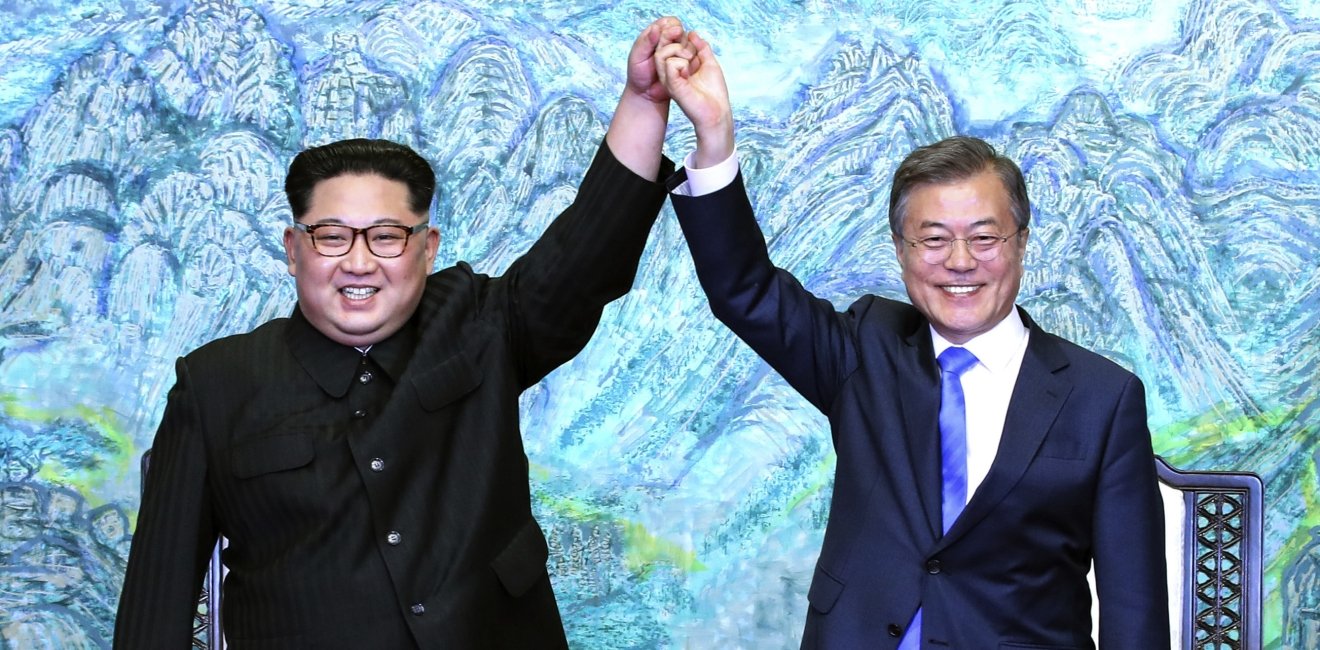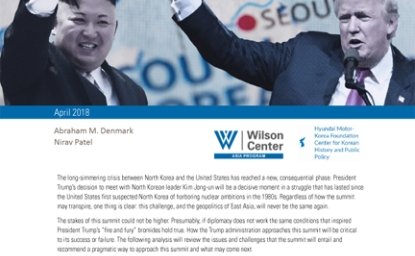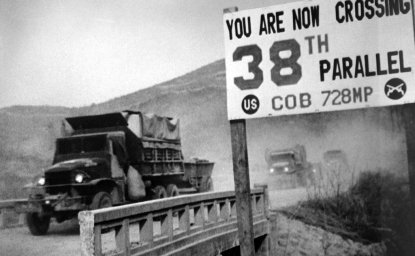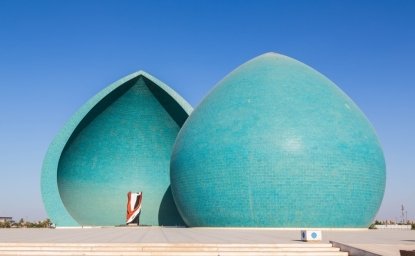The Inter-Korean Summit: Flash Analysis
Wilson Center experts provide flash analysis on the historic summit between North and South Korea.
Wilson Center experts provide flash analysis on the historic summit between North and South Korea.

Jean H. Lee, Director, Hyundai Motor-Korea Foundation Center for Korean History and Public Policy:
On the release of American detainees from North Korea:
"The release of the three Americans detained in North Korea is good news for their families, first and foremost. Tony Kim, who was detained in April 2017, will get to see a grandchild for the first time, a baby born to his son while he was held in a North Korean prison on suspicion of committing 'hostile acts.'
"It was absolutely imperative that the Trump Administration secure the release of the three Americans well before any summit. It would have been inappropriate to push forward with plans to stage a summit between the leaders of North Korea and the United States, two countries in a technical state of war, with three Americans in North Korean custody.
"However, there is a risk to coupling the detainees’ release with diplomatic engagement. With the release taking place just before the anticipated summit with President Trump, Kim Jong Un will be able to go into these talks with the benefit of magnanimity for having freed the Americans on humanitarian grounds. That 'good will' gesture gives him additional leverage. If things go awry, he’ll have a face-saving way of claiming he made a significant effort to reach out to Washington — and was rebuffed, despite his best intentions.
"The sequencing of the release just before the anticipated summit also threatens to reward North Korea for an odious pattern of seizing Americans under questionable circumstances and often without charge. People should not be used as pawns in diplomacy and to lure high-level American officials to Pyongyang."
On the inter-Korean summit:
"This was a powerful show of unity between the two Korean leaders after more than a decade of animosity, providing images and emotional impact that will reap benefits for both Kim and Moon on both sides of the DMZ.
"For Kim, this was his first live appearance on the international stage and a significant milestone moment for him in his goal of showing that he can be an international statesman like other world leaders — and is not just a young man who inherited power of an impoverished country while he was in his mid-20s. Agreeing to allow live coverage of those first moments, to the glare of TV cameras, smartphones, and a livestream that sent him into homes, schools, and offices around the world, was a way of showing that he’s comfortable in the international limelight, unlike his reclusive father, Kim Jong Il. He also wanted to show that he can act off the cuff — a sign of flexibility and charisma — and we immediately saw him show his sense of spontaneity by grabbing President Moon and having him cross from north to south over the Demarcation Line, hand in hand.
"These images will play well back in Pyongyang by showing him as a leader who can play a driving role in changing the tenor of relations on the Korean Peninsula. Remember that he was the one offered an olive branch to South Korea on New Year’s Day, bringing us to this point today.
"And for President Moon, these images will help sway South Korean sentiments toward reconciliation with North Korea. For more than a decade, South Koreans have been cut off from North Korea due to tensions. Young South Koreans no longer feel a sense of kinship with North Koreans, whose lives seem to differ from theirs economically as well as culturally and politically. But seeing Kim Jong Un live, chatting easily with their president, will no doubt have been a jolt to South Koreans and remind them that the North Koreans are the same people in many ways, in language and shared history, if not their political or economic structure.
"...That suggests he will hold onto his nuclear weapons, which North Korea calls its 'treasured sword,' as long as he feels the country remains under threat from the United States."
"For us, this summit is a sterling opportunity to get to know Kim Jong Un. Moon and his delegation will glean valuable information about Kim, how he operates and what he wants from this summit, and that will pave the way for an anticipated summit with President Donald Trump.
"However, we must keep in mind that South Koreans have been through this before, and saw similar images of stirring unity at the inter-Korean summits of 2000 and 2007 — only to see North Korea turn around and build an illicit and threatening nuclear weapons program. South Koreans are hopeful but skeptical, a caution built from decades of broken promises.
"The Panmunjom Declaration promises something different from previous joint Korean statements: a commitment to denuclearization. The specific use of the word 'complete denuclearization' is notable. However, the declaration did not define 'complete denuclearization,' and did not include steps on how the Koreans would reach that goal. Indeed, clarification from the North Korean side is required in light of Kim Jong Un’s April 21 announcement that he is a champion of a 'world free from nuclear weapons' — with a caveat: provided he has the assurances to 'guarantee the security of the state and the safety of the people.' That suggests he will hold onto his nuclear weapons, which North Korea calls its 'treasured sword,' as long as he feels the country remains under threat from the United States.
"The White House will need to press Kim on this point, ideally well before an anticipated summit with President Donald Trump. Simply sitting down with Trump will give Kim the legitimacy he craves and the propaganda he needs to boost his credibility back home. But there is no real sign, despite President Trump’s claims, that North Korea has agreed to give up nuclear weapons without requiring a huge price on the part of the United States in return. That leaves open the chance that President Trump will walk away from this summit empty-handed, and spur the White House to take an even more confrontational stance with North Korea.
"We cannot deny that moves toward peace are better than provocation. But all sides must proceed with a healthy dose of caution as well as optimism."
Abraham Denmark, Director, Asia Program:
"This agreement is laden with optimism and very ambitious goals, but lacks detail on how North and South plan to achieve them. It is more a statement of intent than a roadmap for a way forward.
"The future remains very unclear, and there are innumerable opportunities for all of this to fall apart very rapidly."
"Two initial issues are most apparent: First, a peace treaty will likely need to be signed by China and the U.S. as well as North and South Korea. Expect a four-party mechanism to be established to negotiate a peace treaty, with the U.S. and ROK ensuring that the alliance is unaffected. Second, it calls for the denuclearization of the Korean Peninsula, a term that allows Seoul to say Kim has agreed to denuclearization, while allowing Pyongyang to link its denuclearization to diminishing the U.S.-ROK alliance, potentially including an end to U.S. extended deterrence.
"This agreement greatly raises expectations for the Kim-Trump summit. An agreement between North Korea and the U.S. will need to include a detailed roadmap for a way forward, including each side’s concessions.
"Overall, this is a very positive first step. But the future remains very unclear, and there are innumerable opportunities for all of this to fall apart very rapidly."
Patrick McEachern, Public Policy Fellow, Asia Program:
“South Korea meticulously planned to host the inter-Korean summit – and it paid off... While previous inter-Korean agreements have pledged denuclearization, this marks a significant change in Kim Jong-un's previous public demand to expand his nuclear arsenal quantitatively and qualitatively.
"The two leaders... frankly recognized that the devil will be in the details of implementation."
"The two leaders established a framework for plausible resolution of the most pressing issues on the Peninsula, credibly agreed to further leader-level discussions, and frankly recognized that the devil will be in the details of implementation. This is a great start and should be cause for cautious optimism.
"The public conversation should now shift from speculation on whether North Korea would consider denuclearization to how South Korea and the United States can advance this denuclearization pledge in concrete steps in light of North Korea's reciprocal demands for concrete steps towards an eventual peace agreement.”




The Center for Korean History and Public Policy was established in 2015 with the generous support of the Hyundai Motor Company and the Korea Foundation to provide a coherent, long-term platform for improving historical understanding of Korea and informing the public policy debate on the Korean peninsula in the United States and beyond. Read more


The Indo-Pacific Program promotes policy debate and intellectual discussions on US interests in the Asia-Pacific as well as political, economic, security, and social issues relating to the world’s most populous and economically dynamic region. Read more



